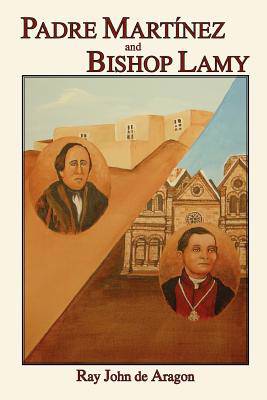
Je cadeautjes zeker op tijd in huis hebben voor de feestdagen? Kom langs in onze winkels en vind het perfecte geschenk!
- Afhalen na 1 uur in een winkel met voorraad
- Gratis thuislevering in België vanaf € 30
- Ruim aanbod met 7 miljoen producten
Je cadeautjes zeker op tijd in huis hebben voor de feestdagen? Kom langs in onze winkels en vind het perfecte geschenk!
- Afhalen na 1 uur in een winkel met voorraad
- Gratis thuislevering in België vanaf € 30
- Ruim aanbod met 7 miljoen producten
Zoeken
Omschrijving
Willa Cather, in the historical novel "Death Comes for the Archbishop," depicts Padre Antonio Jose Martinez as an unscrupulous backward rogue priest and Archbishop Jean Baptiste Lamy as a civilizing, heroic and monumental figure. Countering Cather's assessment and portrayal of these two larger-than-life Southwestern folk heroes, Ray John de Aragon attempts to set the historical record straight. Padre Martinez (1793-1867) is viewed as a genius who was ahead of his time. Recognized as a champion of the poor, defender of the Native Americans and proponent of human rights, it was inevitable that he would clash with Lamy. Bishop Lamy (1814-1888), who also had his followers, emerges as someone whose understanding of native New Mexican cultures was lacking, but one whose intentions were to do good as a missionary in a strange and foreign land. Ray John de Aragon has written extensively on the history of New Mexico and the traditions and culture of northern New Mexico. He is recognized as a master santero with works in numerous private and public collections. His efforts at promoting and preserving the Spanish Colonial heritage of the American Southwest have gained regional and national attention. He has been featured in many publications and a PBS documentary. He holds a Masters in American Studies with emphasis on the Hispanic culture, heritage, history and traditions of New Mexico, and he has lectured and taught in this area at the university level.
Specificaties
Betrokkenen
- Auteur(s):
- Uitgeverij:
Inhoud
- Aantal bladzijden:
- 152
- Taal:
- Engels
Eigenschappen
- Productcode (EAN):
- 9780865345065
- Verschijningsdatum:
- 1/02/2006
- Uitvoering:
- Paperback
- Formaat:
- Trade paperback (VS)
- Afmetingen:
- 152 mm x 229 mm
- Gewicht:
- 231 g

Alleen bij Standaard Boekhandel
+ 69 punten op je klantenkaart van Standaard Boekhandel
Beoordelingen
We publiceren alleen reviews die voldoen aan de voorwaarden voor reviews. Bekijk onze voorwaarden voor reviews.









